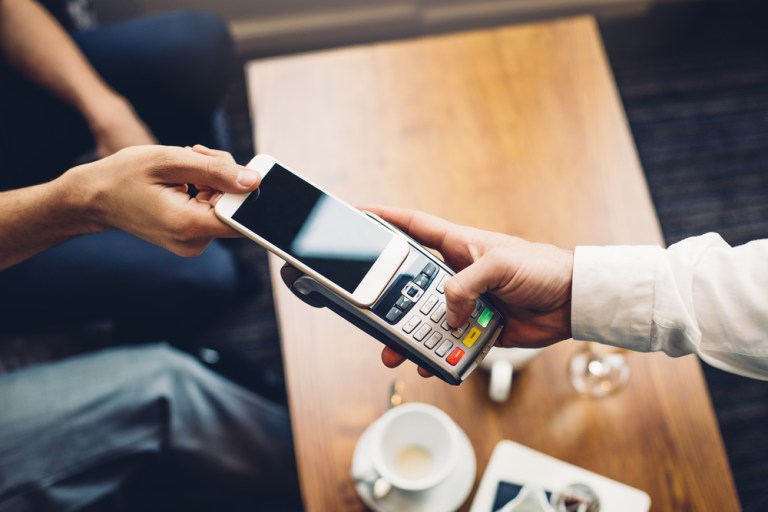
Consumers are thinking about their commerce experience through an entirely different and largely safety-focused lens in a way they never have before. It’s a story told in the data — the PYMNTS COVID-19 Brief Series quantifies the myriad ways health and safety have become prime factors in consumers’ lifestyle choices. And it’s a story told in the subtle but noticeable shifts happening in all of our own lives anecdotally.
“I was going through an airport about a week before everything started shutting down, and all I could think was, thank God I have Apple Pay so I don’t have to touch anything,” Michelle Tempesta, head of product at Paytronix, told PYMNTS in a recent conversation.
Contactless has existed for a long time, but consumers were slow to adopt, mostly because they didn’t have much of a compelling reason to do something differently — their cards worked fine. That opinion has reversed itself overnight, Tempesta noted, as consumers who are learning to be vigilant about wearing masks, wearing gloves and limiting unnecessary exposure.
And at the point of sale (POS) at grocery stores, where they are still shopping in person, they are realizing something important. After all of that careful social distancing, they are not too keen on swiping or dipping a card and “touching a keypad that hundreds of other people have touched within the last hour.”
Contactless is taking off, said Tempesta, as are things like hands-free curbside delivery and in-app ordering at quick-service restaurants (QSRs). In the last few weeks, Paytronix has seen average gift card balances and top-offs increase in value as a growing number of consumers are deciding their preferred payment method is loading a gift card into a mobile app and using that for all their purchases.
The last few weeks have been busy for Paytronix, as hundreds of clients have all decided that the time is now to double down on digital capabilities — and to enable their clients to feel safe while they shop. That has meant helping big-name firms like Panera and Jimmy John’s get up and running quickly with contactless payments, mobile order-ahead and curbside pickup, as well as countless other modifications for their various clients.
“And we can modify our system fast. For example, within days of restaurants shutting down, we had pushed out new technology designed to help,” said Tempesta.
But in this unprecedented environment, helping is more than simply making sure Paytronix’s partners have the technological capabilities to meet their customers’ basic expectations for omnichannel service and contactless payments. By the end of the COVID-19 pandemic, those things won’t just be add-on features, but will become table stakes in the new digital economy. Beyond that, noted Tempesta, Paytronix also needs to help clients tap into their rich customer data, to make sure they are nurturing the most revenue-generating relationships during this critical period.
“Reaching out to loyal customers is key. We’ve talked to several of our clients, and what has come up over and over again is the loyal customers who are saving their businesses at present,” Tempesta noted. “They report seeing a high percentage of their transactions attributed to those loyal customers who are there for them through thick and thin. Continuing to engage with those customers has become critical to many brands’ survival.”
Data, she noted, is what enables brands to identify which customers to target based on their previous usage habits — and it’s what allows them to determine the optimal offerings to add to their feature set to keep those customers engaged.
That is important in the current environment, when focus is keenly honed on survival — but it will be even more critical in the recovery period, as brands of all kinds work to rebuild their relationships with customers in a very new normal. For restaurants, by way of example, that will mean adjusting to a lot of changes, which will breed innovation, said Tempesta. Despite how much their home cooking skills have improved, people will eventually want to eat out again, as the appeal of meals prepared by others has not disappeared. But the reality is that customers will want a different version of that experience.
That might mean small changes, like innovating how reservations are secured to accommodate limited seating capacity, or putting more contactless payment options directly on tables so customers don’t have to hand a card to serving staff. But, Tempesta noted, it might also mean bigger, more foundational changes that blur the line between dining out and dining in.
“We could see subscription service driven by AI, where prepared meals are delivered to a home, office or school — wherever a customer would like them to be — on a regular basis based on their food preferences,” she said.
It is an idea that sounds out of the box today, admittedly. But tomorrow, in a world where a lot of businesses will be operating under new parameters and customers have already started thinking differently about their optimal experiences, the firms that succeed will have to become adept at operating differently, noted Tempesta — and in a way that is far more digitally enabled.